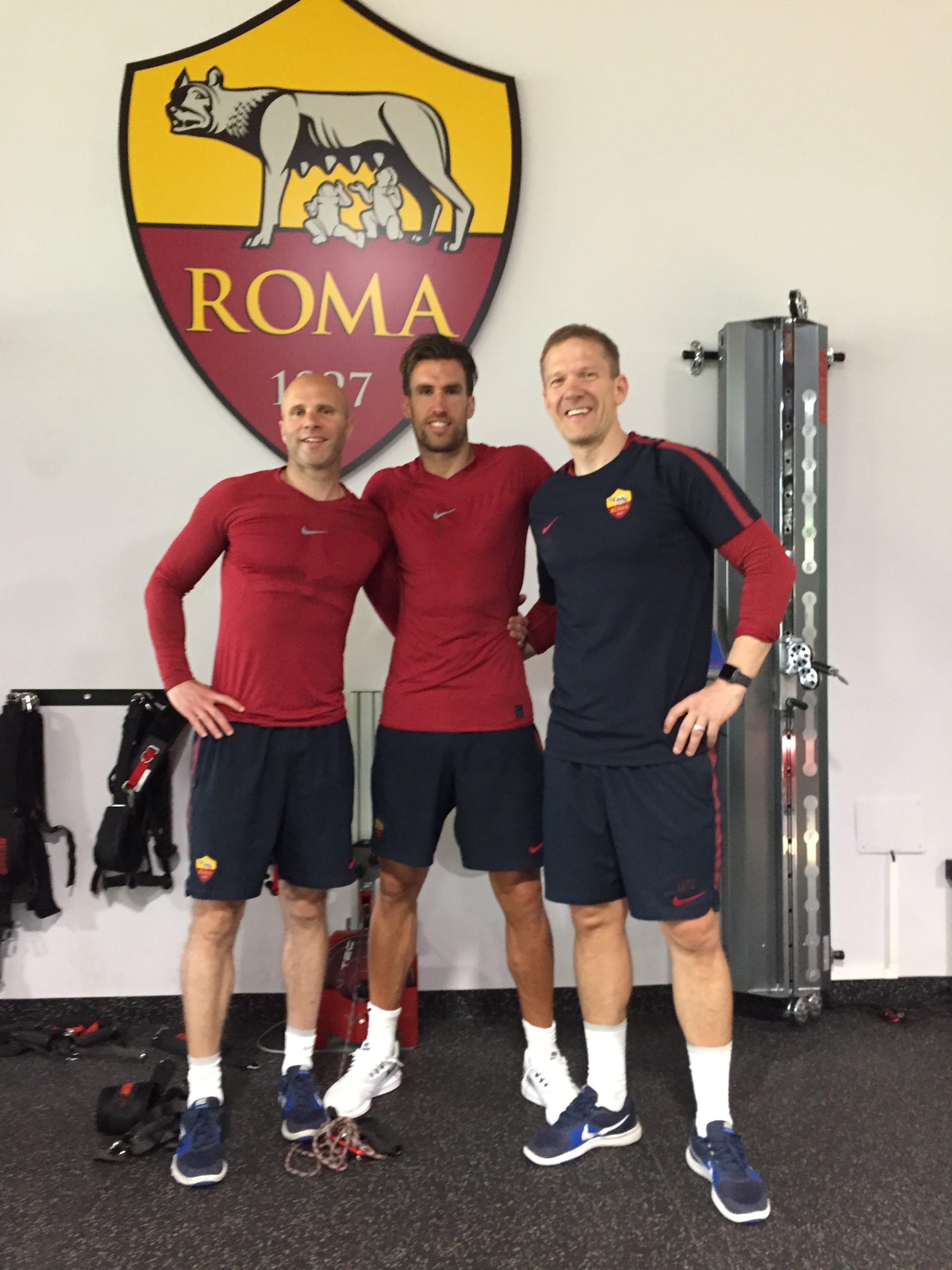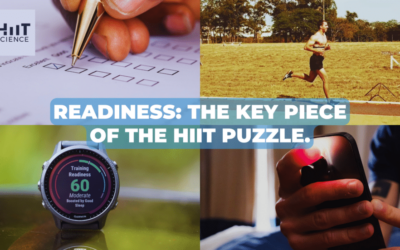In May 2015, we arrived in Rome, Italy to begin a three-year assignment with Associazione Sportiva Roma (AS Roma), an Italian professional football club in Italy’s topflight league, Serie A.
Our job was threefold:- to assist the club in upgrading its facilities,
- to implement a process-driven functional training performance philosophy,
- to integrate that philosophy through all levels within the club, from the academy system to the first team.
Movement is a skill
If you have worked in the field of performance enhancement for any significant length of time, you will have likely developed a good eye for movement. For Performance Coaches, like ourselves, this ‘eye’ is one of the ways in which we evaluate athletes on an ongoing basis. The quality and efficiency with which a player starts, stops, changes direction, and performs general and sport-specific movements, provide important information regarding the player’s athletic profile. Having seen and tested many athletes, spanning half-a-dozen professional sports over the last twenty years, and noting the vast variability in the quality of the movement, we have come to the conclusion that movement is a skill. And just like any skill, it can be improved when the right type of training and coaching is applied. Yet, there seems to be a prevailing acceptance, at least in the European soccer community, that once a player reaches the top level, he or she no longer needs to be coached in these finer points of movement.
Darcy and Ed with former Roma player, Kevin Strootman, after a workout.
Conditioning with or without the ball
There has been a long-running debate between S&C coaches and soccer coaches regarding the most effective way to condition players for the physical demands of the sport. Many soccer purists insist that you can and should do all of your metabolic development work with the ball – meaning small-sided games or game-based HIIT – those of us with more traditional performance backgrounds, see the need to supplement conditioning with the ball alongside conditioning without the ball. Indeed, Martin has already offered some great practical options that practitioner can use to incorporate HIIT into professional soccer training. In contrast, it is worth noting that there is a longstanding tradition in some European countries, Italy for example, to do plenty of conditioning without the ball. The problem is that much of that conditioning tends to be in the form of longer, steady-state work vs the more sport-specific high speed running efforts that Martin recommends. We see a middle-ground solution. If technical coaches divided their training emphasis themes into linear vs lateral, as some performance coaches would prefer, you can tailor the format of the conditioning to fit those training themes. An example training week incorporating movement training could look like this (assuming a six-day match week- Saturday to Saturday) (*denotes the integration of the ball into this activity):Training week for players who played 45+ minutes in the previous match
| Match Day | Theme | Activities | Rate of Perceived Exertion (RPE) Range |
| +1/-6 | Regen/Active Recovery | Roll Bike for 20 mins @ 60-75% maximum heart rate (MHR) Upper Body Lift Lower Body Corrective Circuits Core Stability Massage | 1-3 |
| +2/-5 | Off-Physical & Mental Recovery | 0 | |
| +3/-4 | Longer Pitch/Stride | Linear warm-up (WU)/Movement Skills Linear Plyos *Acceleration Drills Repeated Sprints *Longer Pitch Tactics/matches | 4-6 |
| +4/-3 | Strength/Change of Direction (C.O.D.) | Total Body Lift *Multi-Directional WU *C.O.D. Circuits *Pressing Tactics *Small-Sided Games | 7-10 |
| +5/-2 | Taper/Tactics | Lower Body Corrective Circuits *Multi-Directional WU Tempo Runs Match Tactics | 1-3 |
| +6/-1 | Match Prep | Potentiation *Multi-Directional WU *Match Tactics *Short (2-4 mins) 11 v.11 Games | 2-4 |
| Match Day | Work Hard/Believe in your process | Pre-match WU Play to Win! | 7-10 |
Training week for players who played less than 45 minutes in the previous match
| Match Day | Theme | Activities | RPE Range |
| +1/-6 | Combo Day with Emphasis on Linear Movement | Total Body Lift Linear Movement WU/Skills Tempo Runs *Pitch Work – stride emphasis | 5-7 |
| +2/-5 | Off-Physical &Mental Recovery | 0 | |
| +3/-4 | Longer Pitch/Stride | Linear WU/Movement Skills Linear Plyos *Acceleration Drills Repeated Sprints *Longer Pitch Tactics/matches | 4-6 |
| +4/-3 | Strength/Change of Direction (C.O.D.) | Total Body Lift *Multi-Directional WU *C.O.D. Circuits *Pressing Tactics *Small Sided Games | 7-10 |
| +5/-2 | Taper/Tactics | Regen Lower Body Corrective Circuits *Multi-Directional WU Tempo Runs *Match Tactics | 1-3 |
| +6/-1 | Match Prep | Potentiation *Multi-Directional WU *Match Tactics *Short (2-4 mins) 11 v.11 Games | 1-3 |
| Match Day | Work Hard/Believe in your process | Pre-match WU Play to Win! | 7-10 |
The Role of Technology
There is little doubt that our industry, like many others, has developed a collective infatuation with technology over the last 10-15 years. The number of metrics, both internal and external, that can be tracked, quantified, monitored, and analyzed in real-time or after the fact, is astonishing based on what was available only 10 years ago. In the 3 seasons that we worked at A.S. Roma, we received multiple emails every week from different tech companies claiming to have cracked the code of human performance and injury prevention through their latest innovation. We know our experience is not unique. Technology has become a prominent feature of the professional sports landscape – and whether we like it or not, technology and big data are here to stay. With that being said, we believe it is incumbent upon us as S&C coaches to work with developers and sports scientists to improve the practical application of tech products and more importantly, improve the ways in which data and technology are used in the arena of human performance. In an interview with David Epstein, author of “The Sports Gene,” he says that “we have a tendency to make something important because we can measure it, instead of measuring it because we thought it was important.” This summarizes the issues we face when using data and technology, and it all goes back to your process. I’d summarize the key point as follows:“Use your process to identify the important metrics you need to monitor and analyze in order to produce successful results. Then, develop systems that efficiently collect that data within your daily workflow”.One of the critical first steps is explaining to our athletes why tracking these metrics are important within the context of our team’s process. They may not like the idea of wearing GPS pods or heart rate monitors, but if you can show them how the data collected from those devices effects training volume and/or intensity on a given day, compliance rates will most certainly be higher than they would be otherwise. Once this relationship and two-way communication is established, the data often becomes a valuable entry point for all types of performance-related conversations. For example, many of our players at AS Roma reached a point of interest about their data whereby they would frequently ask to see it, and in these brief, unscheduled meetings, we could use the data to explain why and how the gym work we do addresses deficiencies in their physical profile as an athlete. This approach proved successful in converting some “non-gym guys” into players who came into the gym every day before training for individualized programs to address their deficits and would return to the gym after training for the appropriate regeneration work that set the table for the next day. A notable example of this was Mohammed Salah, who started with a passion for improvement, then applied his work ethic to produce a laser focus on each of the weaknesses we were able to help him identify through objective feedback.







